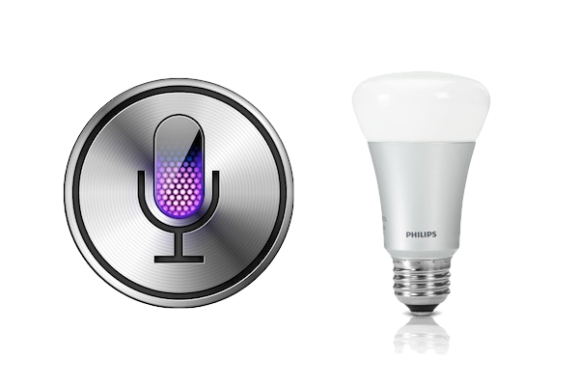
After getting his hands on the Philips Hue smart lightbulb [Brandon Evans] cracked open some of the hardware to see what is inside. He also spent time working out the software tricks necessary to use Siri to control light bulbs from iOS.
If you haven’t heard of the Hue product before it’s an LED bulb that fits in a standard medium base whose color and intensity can be controlled wirelessly. Included in each unit is Zigbee compatible hardware that lets the bulbs form their own mesh network. [Brandon] didn’t crack open the bulb since these things cost a pretty penny and disassembly requires cutting. But he did point us to this post where [Michael Herf] shows what the bulb’s case is hiding. We do get to see the other piece of the puzzle as [Brandon] exposes the internals on the base unit that bridges the mesh network to your home network via Ethernet. An STM32 chip is responsible for controlling the base unit.
Aside from a look at the guts [Brandon] hacked Siri (Apple’s voice activated virtual assistant) to control the system. You can see a demonstration of that in the clip after the break. The details are found in the second half of his post which is linked at the top. The code is found in his siriproxy-hue repository.
















This is awesome! Has there been any similar work with s-voice or google now?
Very cool, [Brandon]! Make sure to add it to the SiriProxy plugins wiki: https://github.com/plamoni/SiriProxy/wiki/Plugins
1. I think the idea of using zigbee in bulbs is rather ok, though i’d like larger power. I’ve seen so many demonstrations where communication fails because of distance or obstacles. You don’t always have another node close enough….
2. there are some people trying to build led bulbs using wifi modules in each bulb…. such a stupid idea, too expensive, too power hungry, too much processing power required. there’s a kickstarter too
3. why is it that everywhere people prefer to speak something, wait so many seconds to be recognized and act rather than pressing a button? Until voice recognition is good enough to work from a distance(not speaking next to a phone) and act instantly while dealing with interference (music or noise) i don’t find it practical. Even speaking some command that takes 3 seconds is longer than pressing a button which takes half a second.
Let me get this straight, Philips is expecting people to pay $200 for three light bulbs, as well as $60/additional light bulb? Where is the appeal here? You could spend half as much with turnkey X10 systems and have more control.
Also, what is it that makes all of these LED bulbs expensive? The cheapest ones I’ve seen are still around $30 even though I can buy high-lumen SMD LEDs for dirt cheap. Honest question, what’s so costly about making them, R&D?
A lot of time Philips expects you to pay for the brand name, no matter what feces they are trying to sell to you. Most of the time the hw is not even made or invented by Philips nowadays. I used to work for Philips support so I know a bit about how they work…
For what its worth, I know that Philips did develop a lot of this and were instrumental in putting together the ZigBee LightLink specification. I know this since I was sat next to them at some of the interop test events (I’ve worked on LightLink development but not for Philips). I don’t really think the hardware is anything special, its the software that took so long to develop and certify.
is there any Open Source Projects like this?
I’m only a few days away from open-sourcing a somewhat similar project, but my implementation (http://www.phantomlink.com/lab/light.aspx) is designed to be fully self-contained and wireless in order to hide the unit among other decorations in a room. However, it wouldn’t take much to enhance the existing hardware to be a wired system and drive some larger LED arrays to get a brighter effect.
can any one suggest me tutorials for siri proxy